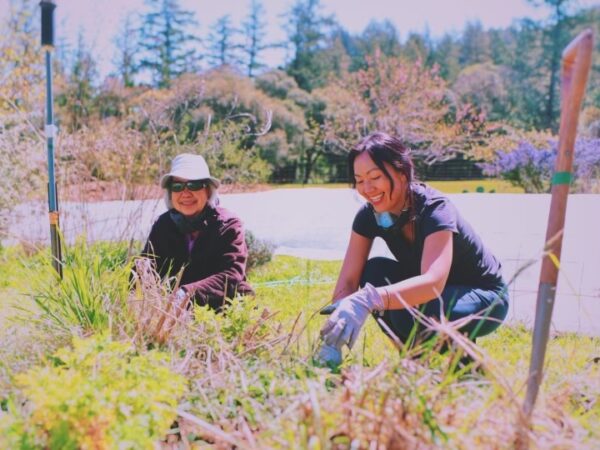by Yia Vang
The following is an excerpt from a chapter in Yia Vang’s cookbook memoir showcasing Hmong food and her experience as a Hmong American learning to cook from her mom.
When I was younger and people asked me, “What is Hmong food?” I would cringe while telling them we ate freshly killed chicken at home. We would pluck and chop it and boil it into a soup with the feet and head included. It embarrassed me that breakfast, lunch, and dinner were all the same. Breakfast was last night’s leftovers, rice, and a little bowl of Thai chili pepper with fish sauce on the side. I didn’t want to tell them that at family events we ate raw ground pork laab or beef stew made with the gizzards, liver, intestines, and blood. The image of a shaman sacrificing a pig and the stench of pig feces filled my mind—I definitely could not tell them that.
At the table during mealtimes, we kids had our own American dishes, and the elders stuck with their own. The elders used to tell us, “When you are older, you will know the taste of food. You will know what good food is.” Meanwhile, they’d be eating sauteed bitter melon, pigs’ feet soup, and other dishes for which I don’t know the American names, while we children stared into our bowls of hot dogs and rice with ketchup. I knew there’s no way I would ever trade my meal for bitter melon and pigs’ feet.
The old people just didn’t understand that hotdogs were where it was at. Their food was from the old country. It took hours to prepare, smelled of grass and gizzards, and tasted bitter and bland at the same time. Not like the savory taste of hotdogs or the mixture of sweet, savory, and sour flavors of Big Macs.
My teenage years were fed by fast food and American meals. In college, it was pizza, takeout, and late-night French bread with artichoke dip. During my last year of college, my friends and I became more refined. We had weekly themed meals based on various cuisines, such as tamales, Singaporean chili crab, or bibimbap. Homemade desserts included brownies, tiramisu, or bread pudding. This was a way for us to connect despite our busy schedules. We learned from cookbooks and online recipes. We were proud of our meals.
When I made my monthly visits home, I took along ingredients for the recipes I had learned, excited to awe Mom with my new cooking skills. I was determined to prove to her I could cook. However, she declared each meal of mine either too salty or too sweet or too something or not enough of another thing. I did not impress her with my pastas or casseroles or tamales or curries, all of which were rich in sauces and flavors and fancy ingredients. I would bite back tears when she declared that I “can’t make a meal she can eat.” I decided she was stuck in her ways and didn’t understand food or flavors or ingredients.
Finally, in my forties, I became curious about Mom’s dishes. I was hungry to know how she tasted food, how she made sticky rice cakes and sugar cane syrup, or what pumpkin she used for the broth she ate at every meal. I wanted to know the taste of fresh tofu made with soybeans.
She’d show me how to make medicinal chicken soup: how long to boil the chicken, how much salt and black pepper should go in it. She’d have me cut up the pumpkin squash for her broth and tell me not to boil it too long and to put in some sugar towards the end. These became the foods I missed when I was away from home and the dishes I started to make to nourish my soul.
Maybe it’s an age thing. Or maybe my taste buds had finally arrived, like the rice that “arrives” when it’s steamed twice. I feel like I’m finally waking up to the taste of food.

 Get access to the monthly Rehumanization Magazine featuring contributors from the front lines of this effort—those living on Death Row, residents of the largest women’s prison in the world, renowned ecologists, the food insecure, and veteran correctional officers alike.
Get access to the monthly Rehumanization Magazine featuring contributors from the front lines of this effort—those living on Death Row, residents of the largest women’s prison in the world, renowned ecologists, the food insecure, and veteran correctional officers alike.